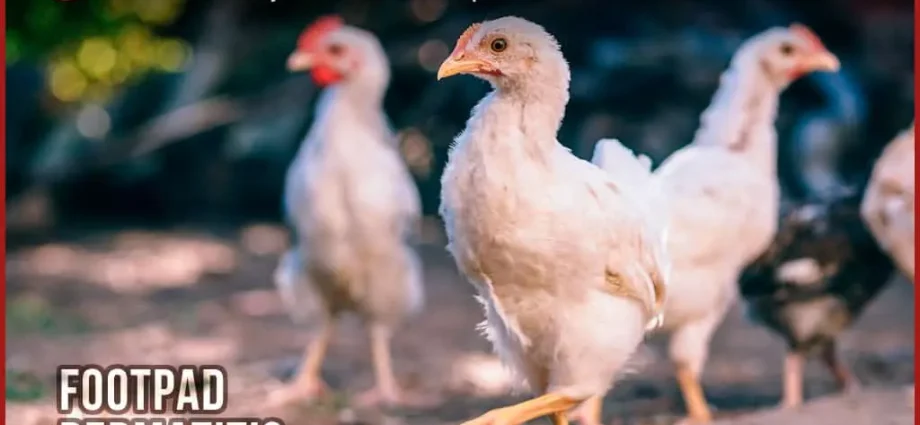Contents
Many people in the countryside raise chickens. This occupation is profitable, but at the same time there is a lot of trouble. You need to know the nuances of growing, caring, feeding and keeping. In addition, chickens, like any animals, are prone to various diseases. Therefore, chicken owners need to know the symptoms of leg diseases and how to help and treat chickens.
Among the problems often encountered in raising poultry are leg diseases in chickens. Sick hens stop laying. If you do not take measures to treat the bird, you can lose part of the livestock. In the article we will try to talk about the most common diseases of the legs, the features of prevention and treatment.
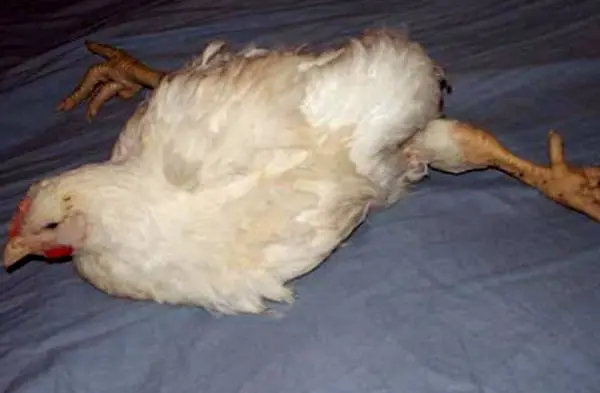
Causes of leg disease
Often, chickens, including broilers, sit on their feet, their motor activity is limited. Why does the musculoskeletal system fail in poultry, what is the cause of the disease? It is impossible to answer this question unambiguously, because there are a lot of reasons.
Etiological factors:
- Content errors. Chickens need to move a lot. If the room is small, the bird does not have the opportunity to “warm up”, growths may appear on the legs or, as poultry farmers say, a calcareous leg.
- Incorrectly composed diet, when there are not enough vitamins B, A, E, D in the feed. In this case, the paws of chickens may hurt due to beriberi – rickets.
- The occurrence of gout.
- Chicken lameness.
- Joint problems – arthritis, arthrosis, tendovaginitis.
- Curvature and curliness of the fingers.
- Cnemidocoptosis.
We will now talk about some diseases of the legs of chickens.
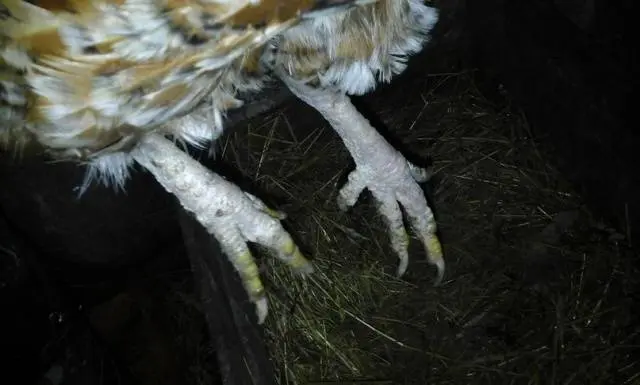
Gout in a bird
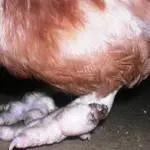
Gout is also called urolithiasis. In chickens and cockerels, for some reason, and primarily due to improper feeding, uric acid salts are deposited in the joints and muscles of the legs.
Symptoms
- With gout, the chicken becomes lethargic, weak, because it practically stops eating. As a result, the body is exhausted.
- The legs swell, growths first appear on the joints, then the joints become deformed and become inactive.
- Gout, in addition to the joints of the legs, affects the kidneys, liver and intestines.
Prevention
If chickens fall to their feet, urgent measures must be taken:
- give vitamin A in the feed;
- reduce the amount of protein;
- increase the time and area of walking broilers.
Treatment
You can treat chickens with gout on your own:
- Drink soda for at least 14 days. For each chicken 10 grams.
- To remove salts, chickens should receive atofan in the amount of half a gram per head for two days.
Knemidocoptosis
Often, paw disease in chickens is associated with knemidokoptosis. In the people, this chicken disease is called scabies or calcareous foot. Chicken can be cured at the initial stage.
A bird with knemidokoptosis should be isolated immediately, since the infection can be transmitted to other chickens. The premises are disinfected, the bedding is removed. Processing from knemidokoptosis is subjected to feeders, nests for laying eggs, inventory that was used to clean the chicken coop.
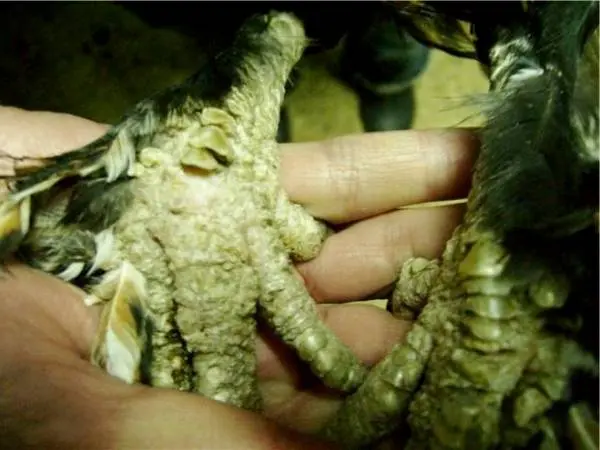
Scabies is the most common cause of knemidocoptosis of the legs in chickens. The tick, having settled on the body of a bird, is able to gnaw through passages on the legs that are invisible to the human eye for laying eggs. After a short time, larvae will hatch from them.
The skin with knemidokoptosis constantly and unbearably itches, the chickens either fall to their feet or run around the chicken coop without stopping. It is necessary to identify the disease as early as possible, otherwise it will become chronic.
Symptoms of the disease
- With knemidocoptosis, the legs of the chicken are covered with ugly growths, which eventually turn into long-term non-healing wounds.
- A white coating appears on the scales, over time, the scales begin to fall off. From afar, it seems that the chickens have climbed into the lime with their paws.
- Chickens with knemidokoptosis feel uncomfortable and anxious. It is especially difficult for chickens to tolerate the disease at night, when ticks are most active.
How to treat
At the initial stage, leg disease (knemidocoptosis) in chickens is treated. You don’t need any expensive drugs.
To destroy the chicken tick, laundry soap is simply diluted in hot water (until completely dissolved). In the resulting cooled solution, the limbs of a chicken or a rooster affected by knemidokoptosis are placed and kept for about half an hour. If there is one percent creolin, then after the bath, the legs of the chickens are treated with such a solution. But today it is difficult to purchase such a drug, so you can buy birch tar in a pharmacy for the treatment of cnemidocoptosis.
We treat diseases of the legs of chickens with our own hands:
chicken lameness
Sometimes, after releasing chickens for a walk, the owners notice that they are limping. Most often, laying hens suffer from this disease. Chickens can limp on one or both legs due to mechanical damage:
- cuts to the fingers or feet from glasses or sharp stones;
- sprains;
- dislocations;
- bruises;
- pinching of nerves;
- muscle damage;
- dietary deficiency.
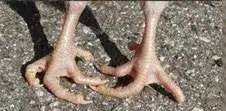
With regards to broilers, they have lameness due to intensive growth and weight gain. Adult chickens begin to fall on their feet if they have diseased kidneys.
symptomatology
- A disease such as lameness can begin suddenly or imperceptibly, and sometimes the chicken is lame in only one leg.
- Swelling appears on the joints of the legs, it is enlarged, unnaturally screwed.
- Legs with chicken lameness tremble.
- Even short runs are given with great difficulty, often ending in a fall.
- It is difficult for a bird with chicken lameness not only to stand, but also to rise to its feet.
How to treat
Seeing a lame chicken, novice breeders think about the method of treatment. What to do? First, you need to examine all the hens, especially if they fall on their feet. Secondly, it is impossible to leave a lame chicken in the same pen with healthy birds – they will peck. Such is the nature of animals: they cannot see sick people nearby.
Sometimes it’s not cuts that cause lameness in broilers, but an ordinary thread that has wound around their legs. It must be carefully removed.
Lame chickens are separated and well fed to relieve stress. If there are cuts on the paws, then hydrogen peroxide, brilliant green and iodine can be used for processing.
If the chicken sits on its feet, and no mechanical damage is found, then the problem of leg lameness may be due to infection. Only a specialist can make a diagnosis, prescribe treatment.
Arthritis, tendovaginitis
Chickens fall on their feet with arthritis, when the articular bag and the tissues adjacent to them become inflamed. This disease of the legs is inherent in broiler chickens.
There is another disease of the legs – tendovaginitis, associated with inflammation of the tendons. Most often, old chickens suffer from it. They sit on their feet, they cannot stand for a long time. The cause of tendovaginitis can be not only mechanical damage, but also pathogens in chickens (viruses or bacteria). Most often, leg diseases occur in dirty chicken coops, as well as with severe crowding of chickens.

Symptoms
- in chickens with arthritis or tendovaginitis, lameness is observed;
- joints increase, their temperature rises;
- because of the swelling on the legs, the chickens do not move from one place all day.
Features of treatment
Diseases of chickens arthritis and tendovaginitis are treated with antibiotics and antiviral drugs:
- sulfadimethoxine;
- Polymyxin M sulfate;
- Ampicillin;
- Benzylpenicillin.
During the treatment of leg disease (arthritis and tendovaginitis), drugs must be injected into chickens for at least 5 days intramuscularly or added to feed.
crooked fingers
Another leg disease of chickens that is difficult to treat is crooked fingers that occur in chickens in the first days of life. Birds affected by this disease walk on the side of the foot, as if sneaking up on tiptoe. The cause of crooked fingers is most often associated with improper care, keeping in a cold place, on a metal mesh. Birds, as a rule, survive, but lameness will never get rid of, treatment is impossible.
curly fingers
What other leg diseases are found in chickens and how can they be treated? Curly fingers of chickens can develop if there is not enough riboflavin in the feed. In addition to the acquired paralysis of the limbs, chickens grow poorly and practically do not develop, fall on their feet. It is not advisable to keep chickens with fingertips bent down, as in the photo below.
As for the treatment of curly fingers, it is successful at the initial stage. Chickens are fed multivitamins with riboflavin.
Instead of a conclusion
It should be understood that no bird owner is immune from leg diseases in chickens and their treatment. But the suffering of chickens can be minimized if the rules for raising poultry are followed.
This applies not only to feeding chickens with balanced feeds that correspond to breeds and age, but also to keeping birds in clean, bright and spacious rooms. In addition, only careful attention to chickens and roosters, the immediate isolation of diseased birds, will allow raising healthy chickens for meat and eggs.










